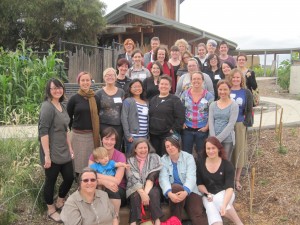EDIT: I had to add this, because it was cracking me up:

FOR LIKE EVERY REASON EVER
I’m reimplementing some expensive database queries, moving them from our middleware into materialized view tables. We make pretty extensive use of Common Table Expressions (CTEs). And we generate many reporting queries that calculate averages and percentages of a total. One way this could be done is with a CROSS JOIN, which is a cartesian product of two tables, adding the total and then the percentage calculation to our original table that produces counts of events. For information about JOIN types supported by PostgreSQL, see SELECT…FROM documentation.
Or we could use OVER(), one of several Window Functions supported by Postgres. From the Postgres documentation, Window Functions are:
A window function performs a calculation across a set of table rows that are somehow related to the current row. This is comparable to the type of calculation that can be done with an aggregate function. But unlike regular aggregate functions, use of a window function does not cause rows to become grouped into a single output row — the rows retain their separate identities. Behind the scenes, the window function is able to access more than just the current row of the query result.
A few other folks have written about Window Functions: Postgres Guide to Window Functions, Window Functions: Postgres’s best kept secret, SQL Window Functions (examples in Ruby). “All built-in and user-defined aggregate functions — such as count, max, bit_or, or xmlagg” — are available for computation as a window function, quoting Open Logic, who phrased it well.
If you read about OVER(), you’ll see that all the examples specify a PARTITION clause. But you don’t have to specify a PARTITION to take advantage of the feature.
We had a query containing two CTEs and a final SELECT that produced the matview data. Here’s an example of that query:
WITH crashes as (
SELECT
product_name as category
, version_string
, SUM(report_count) as report_count
FROM signature_summary_products
JOIN signatures USING (signature_id)
WHERE signatures.signature = 'libflashplayer.so@0x1f2a14'
AND report_date >= now()::date - '15 day'::interval
AND report_date < now()::date
GROUP BY product_name, version_string
),
totals as (
SELECT
category
, version_string
, report_count
, SUM(report_count) OVER () as total_count
FROM crashes
)
SELECT category
, version_string
, report_count
, round((report_count * 100::numeric)/total_count,3)::TEXT
as percentage
FROM totals
ORDER BY report_count DESC;
The part under consideration is:
, SUM(report_count) OVER () as total_count
So, you see that OVER() has no PARTITION defined, meaning that the SUM will be calculated over the entire result.
Here is that same query, implemented using SUM() and a CROSS JOIN:
WITH crashes as (
SELECT
product_name as category
, version_string
, SUM(report_count) as report_count
FROM signature_summary_products
JOIN signatures USING (signature_id)
WHERE signatures.signature = 'libflashplayer.so@0x1f2a14'
AND report_date >= now()::date - '15 day'::interval
AND report_date < now()::date
GROUP BY product_name, version_string
),
totals as (
SELECT
SUM(report_count) AS total_count
FROM crashes
)
SELECT category
, version_string
, report_count
, round((report_count * 100::numeric)/total_count,3)::TEXT
as percentage
FROM crashes CROSS JOIN totals
ORDER BY report_count DESC;
What’s the difference to Postgres between that and a SUM() plus a CROSS JOIN?
Here’s the EXPLAIN output from this query, pared down to the relevant section:
CTE totals
-> WindowAgg (cost=0.00..0.03 rows=1 width=72) (actual time=0.112..0.114 rows=3 loops=1)
-> CTE Scan on crashes (cost=0.00..0.02 rows=1 width=72) (actual time=0.097..0.100 rows=3 loops=1)
-> CTE Scan on totals (cost=0.00..0.04 rows=1 width=104) (actual time=0.121..0.129 rows=3 loops=1)
The important bit to have a look at is WindowAgg right after CTE totals.
Now compare to the EXPLAIN output from a SUM() plus a CROSS JOIN query:
CTE totals
-> Aggregate (cost=0.02..0.03 rows=1 width=8) (actual time=0.015..0.015 rows=1 loops=1)
-> CTE Scan on crashes (cost=0.00..0.02 rows=1 width=8) (actual time=0.001..0.004 rows=3 loops=1)
-> Nested Loop (cost=0.00..0.07 rows=1 width=104) (actual time=0.191..0.205 rows=3 loops=1)
-> CTE Scan on crashes (cost=0.00..0.02 rows=1 width=72) (actual time=0.162..0.164 rows=3 loops=1)
-> CTE Scan on totals (cost=0.00..0.02 rows=1 width=32) (actual time=0.006..0.006 rows=1 loops=3)
You can see here that we now have an Aggregate (for the SUM()) plus a Nested Loop (for the CROSS JOIN). This example query only has three results returned, but our more typical queries involve 10k or more rows returned.
Avoiding the Aggregate and Nested Loop will save us lots of memory and processing time on every run of a very expensive query.

